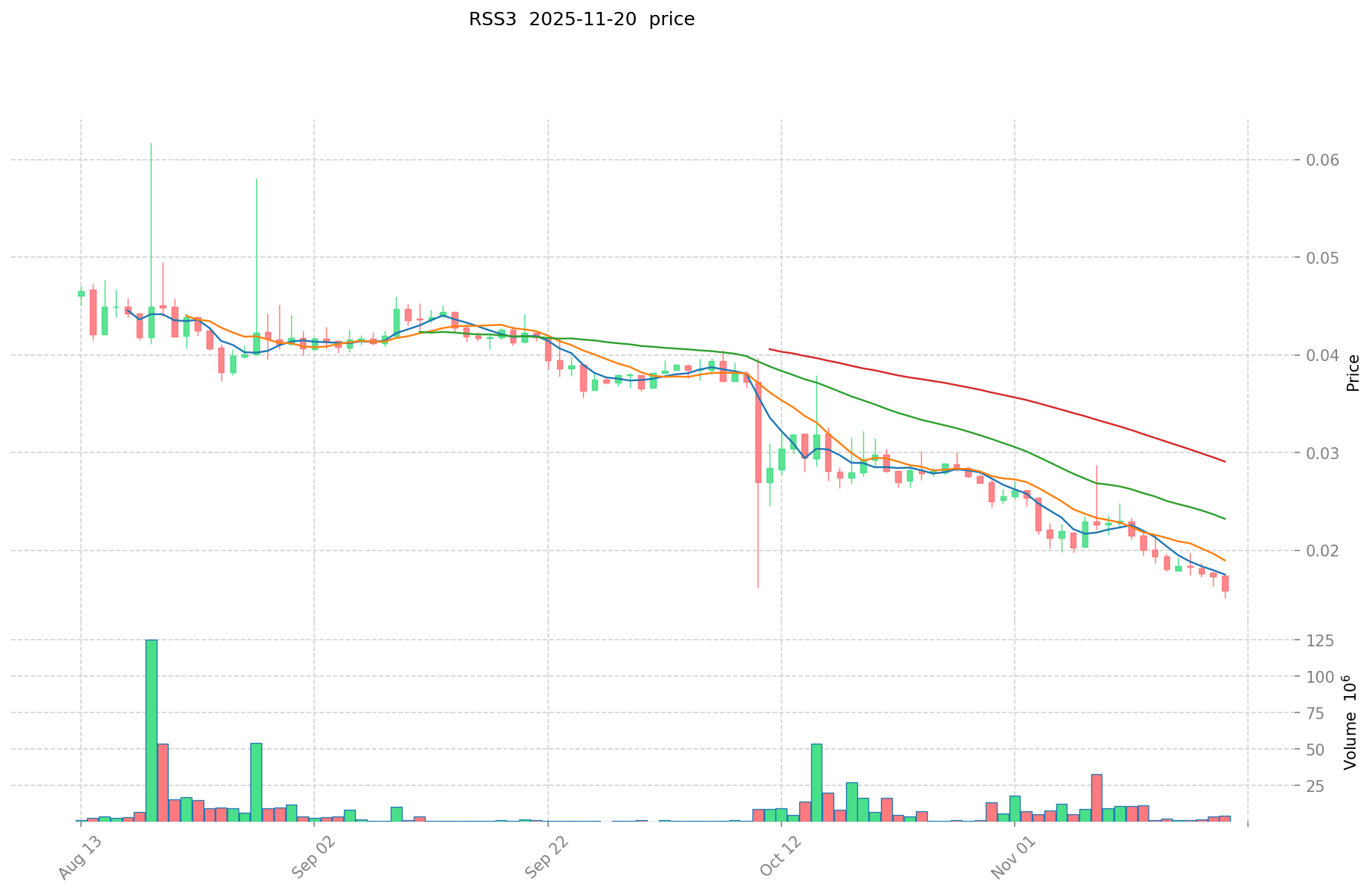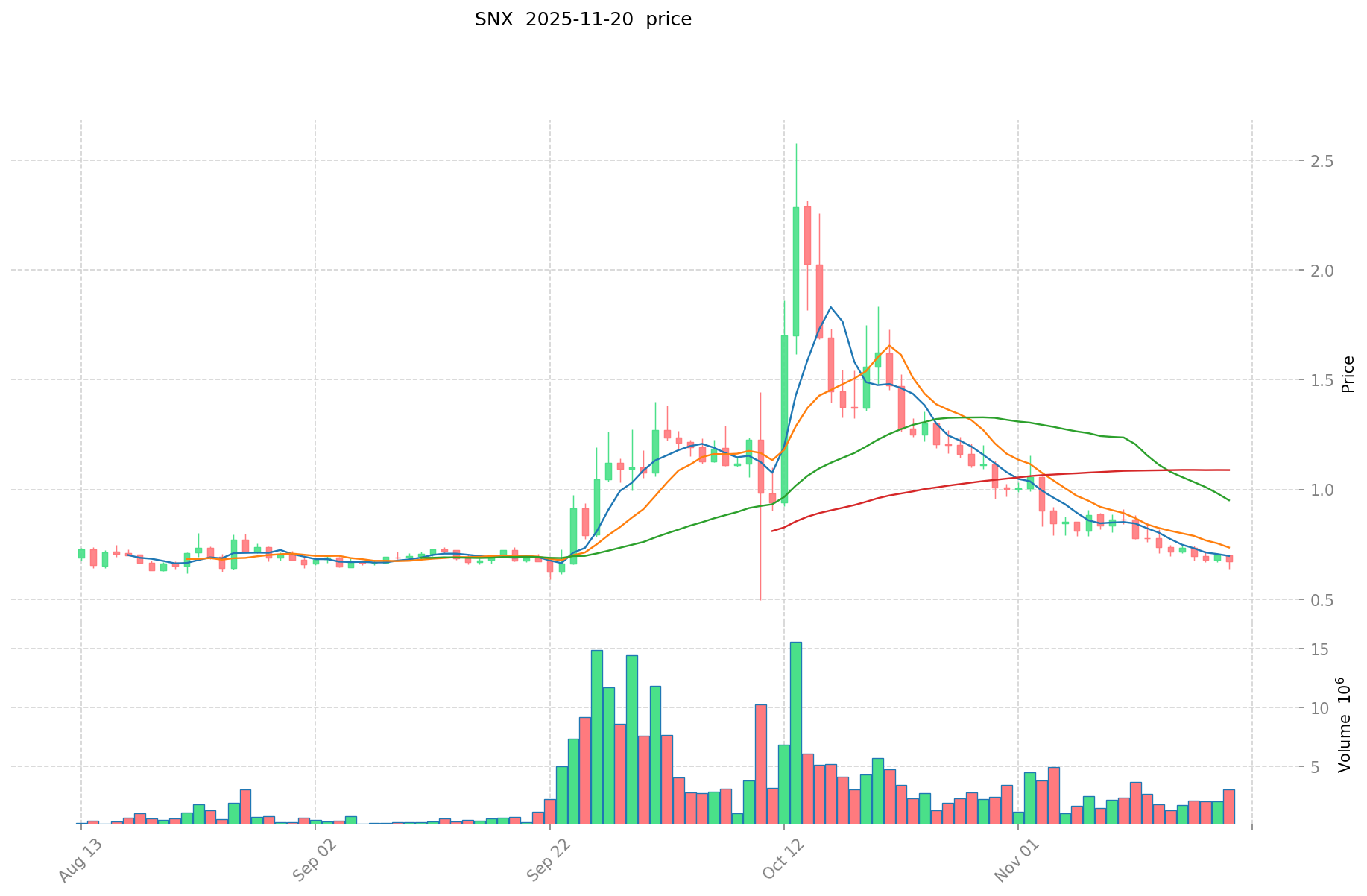RSS3 vs SNX: The Battle of Decentralized Content Protocols
Introduction: RSS3 vs SNX Investment Comparison
In the cryptocurrency market, RSS3 vs Synthetix (SNX) comparison has always been a topic that investors cannot avoid. The two not only have significant differences in market cap ranking, application scenarios, and price performance, but also represent different crypto asset positioning.
RSS3 (RSS3): Since its launch in 2021, it has gained market recognition for its decentralized content and social protocol design.
Synthetix (SNX): Introduced in 2018, it has been hailed as a platform for creating synthetic assets, becoming one of the leading projects in decentralized finance (DeFi).
This article will comprehensively analyze the investment value comparison between RSS3 and SNX, focusing on historical price trends, supply mechanisms, institutional adoption, technological ecosystems, and future predictions, attempting to answer the question investors are most concerned about:
"Which is the better buy right now?"
I. Price History Comparison and Current Market Status
RSS3 (Coin A) and SNX (Coin B) Historical Price Trends
- 2022: RSS3 reached its all-time high of $0.687355 on February 15, 2022.
- 2021: SNX hit its all-time high of $28.53 on February 14, 2021.
- Comparative analysis: In the recent market cycle, RSS3 has fallen from its all-time high of $0.687355 to its current price of $0.01689, while SNX has dropped from its peak of $28.53 to $0.6639.
Current Market Situation (2025-11-20)
- RSS3 current price: $0.01689
- SNX current price: $0.6639
- 24-hour trading volume: RSS3 $191,147.68 vs SNX $1,723,627.06
- Market Sentiment Index (Fear & Greed Index): 11 (Extreme Fear)
Click to view real-time prices:
- View RSS3 current price Market Price
- View SNX current price Market Price


II. Core Factors Influencing RSS3 vs SNX Investment Value
Supply Mechanisms Comparison (Tokenomics)
- RSS3: Total supply capped at 1 billion tokens with deflationary mechanisms through buyback and burn
- SNX: Inflationary model with rewards for staking; currently approximately 300 million tokens in circulation
- 📌 Historical pattern: SNX's inflationary model has historically created selling pressure, while RSS3's capped supply may provide scarcity value long-term.
Institutional Adoption and Market Applications
- Institutional holdings: SNX has greater institutional adoption with established DeFi presence and derivatives trading focus
- Enterprise adoption: SNX powers Synthetix protocol enabling synthetic assets trading across multiple chains, while RSS3 focuses on decentralized social data infrastructure
- Regulatory attitudes: Both tokens face regulatory uncertainty, but SNX's longer market presence provides more regulatory clarity
Technical Development and Ecosystem Building
- RSS3 technical upgrades: Building decentralized social graph infrastructure with network integration through RSS3 Network and Revery
- SNX technical development: V3 upgrade implementation focusing on cross-chain functionality, improved capital efficiency, and spot markets
- Ecosystem comparison: SNX has established DeFi presence with synthetic assets trading, while RSS3 is building social data infrastructure with growing developer adoption
Macroeconomic and Market Cycles
- Performance in inflationary environments: SNX tends to follow broader crypto market trends while being influenced by DeFi sector performance
- Macroeconomic monetary policy: Both tokens show sensitivity to interest rate changes and broader crypto market sentiment
- Geopolitical factors: SNX's derivatives trading may benefit from increased market volatility, while RSS3's social data focus remains less directly impacted by immediate geopolitical concerns
III. Price Prediction for 2025-2030: RSS3 vs SNX
Short-term Prediction (2025)
- RSS3: Conservative $0.0139 - $0.0168 | Optimistic $0.0168 - $0.0215
- SNX: Conservative $0.4092 - $0.66 | Optimistic $0.66 - $0.8712
Mid-term Prediction (2027)
- RSS3 may enter a growth phase, with estimated prices $0.0196 - $0.0283
- SNX may enter a bullish market, with estimated prices $0.8243 - $1.0368
- Key drivers: Institutional capital inflow, ETFs, ecosystem development
Long-term Prediction (2030)
- RSS3: Base scenario $0.0270 - $0.0351 | Optimistic scenario $0.0351 - $0.0351
- SNX: Base scenario $1.2255 - $1.3481 | Optimistic scenario $1.3481 - $1.3481
Disclaimer: The above predictions are based on historical data and market analysis. Cryptocurrency markets are highly volatile and subject to rapid changes. These projections should not be considered as financial advice. Always conduct your own research before making investment decisions.
RSS3:
| 年份 | 预测最高价 | 预测平均价格 | 预测最低价 | 涨跌幅 |
|---|---|---|---|---|
| 2025 | 0.0214656 | 0.01677 | 0.0139191 | 0 |
| 2026 | 0.022176648 | 0.0191178 | 0.015485418 | 13 |
| 2027 | 0.02828669688 | 0.020647224 | 0.0196148628 | 22 |
| 2028 | 0.026913656484 | 0.02446696044 | 0.014680176264 | 44 |
| 2029 | 0.0282593393082 | 0.025690308462 | 0.01464347582334 | 52 |
| 2030 | 0.03506727105063 | 0.0269748238851 | 0.02157985910808 | 59 |
SNX:
| 年份 | 预测最高价 | 预测平均价格 | 预测最低价 | 涨跌幅 |
|---|---|---|---|---|
| 2025 | 0.8712 | 0.66 | 0.4092 | 0 |
| 2026 | 0.934032 | 0.7656 | 0.589512 | 15 |
| 2027 | 1.03677552 | 0.849816 | 0.82432152 | 28 |
| 2028 | 1.2451504032 | 0.94329576 | 0.9149968872 | 42 |
| 2029 | 1.356836621184 | 1.0942230816 | 0.809725080384 | 64 |
| 2030 | 1.3480828365312 | 1.225529851392 | 1.00493447814144 | 84 |
IV. Investment Strategy Comparison: RSS3 vs SNX
Long-term vs Short-term Investment Strategy
- RSS3: Suitable for investors focused on decentralized social infrastructure and ecosystem potential
- SNX: Suitable for investors interested in DeFi and synthetic assets trading
Risk Management and Asset Allocation
- Conservative investors: RSS3: 20% vs SNX: 80%
- Aggressive investors: RSS3: 40% vs SNX: 60%
- Hedging tools: Stablecoin allocation, options, cross-currency portfolios
V. Potential Risk Comparison
Market Risk
- RSS3: Limited trading history and market cap may lead to higher volatility
- SNX: Susceptible to DeFi sector fluctuations and broader crypto market trends
Technical Risk
- RSS3: Scalability, network stability
- SNX: Smart contract vulnerabilities, cross-chain risks
Regulatory Risk
- Global regulatory policies may impact both tokens differently, with SNX potentially facing more scrutiny due to its role in synthetic assets trading
VI. Conclusion: Which Is the Better Buy?
📌 Investment Value Summary:
- RSS3 advantages: Capped supply, growing ecosystem for decentralized social data
- SNX advantages: Established DeFi presence, institutional adoption, cross-chain functionality
✅ Investment Advice:
- New investors: Consider a small allocation to SNX as part of a diversified crypto portfolio
- Experienced investors: Balance between RSS3 and SNX based on risk tolerance and belief in respective ecosystems
- Institutional investors: SNX may offer more immediate opportunities in DeFi, while RSS3 presents a long-term bet on decentralized social infrastructure
⚠️ Risk Warning: The cryptocurrency market is highly volatile. This article does not constitute investment advice. None
VII. FAQ
Q1: What are the main differences between RSS3 and SNX? A: RSS3 is a decentralized content and social protocol launched in 2021, while SNX (Synthetix) is a platform for creating synthetic assets introduced in 2018. RSS3 focuses on building social data infrastructure, while SNX is primarily used in decentralized finance (DeFi) for synthetic asset trading.
Q2: Which token has performed better historically? A: SNX reached its all-time high of $28.53 in February 2021, while RSS3's all-time high was $0.687355 in February 2022. However, both have seen significant price drops since their peaks, with SNX currently trading at $0.6639 and RSS3 at $0.01689 as of 2025-11-20.
Q3: How do their supply mechanisms differ? A: RSS3 has a capped total supply of 1 billion tokens with deflationary mechanisms through buyback and burn. SNX has an inflationary model with rewards for staking and currently has approximately 300 million tokens in circulation.
Q4: Which token has greater institutional adoption? A: SNX has greater institutional adoption with an established presence in the DeFi sector and a focus on derivatives trading. RSS3, being newer, is still building its ecosystem and institutional partnerships.
Q5: What are the key technical developments for each token? A: RSS3 is building decentralized social graph infrastructure with network integration through RSS3 Network and Revery. SNX is implementing its V3 upgrade, focusing on cross-chain functionality, improved capital efficiency, and spot markets.
Q6: What are the price predictions for RSS3 and SNX by 2030? A: For RSS3, the base scenario predicts $0.0270 - $0.0351, with an optimistic scenario of up to $0.0351. For SNX, the base scenario predicts $1.2255 - $1.3481, with an optimistic scenario of up to $1.3481. However, these predictions are subject to market volatility and should not be considered financial advice.
Q7: How should investors approach RSS3 and SNX in their portfolio? A: Conservative investors might consider allocating 20% to RSS3 and 80% to SNX, while aggressive investors might opt for 40% RSS3 and 60% SNX. New investors may want to start with a small allocation to SNX as part of a diversified crypto portfolio, while experienced investors could balance between the two based on their risk tolerance and belief in the respective ecosystems.
Share
Content